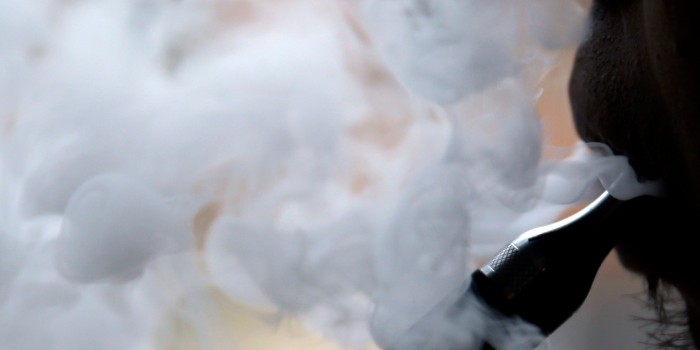(Headline USA) Aaliyah Iglesias, like thousands of other students around the country, was caught vaping in a bathroom by surveillance equipment that schools have installed to crack down on electronic cigarettes, often without informing students.
Schools nationwide have invested millions of dollars in the monitoring technology, including federal COVID-19 emergency relief money.
E-cigarettes have inundated middle and high schools. The devices can dispense vapor containing higher concentrations of nicotine than tobacco cigarettes. Millions of minors report vaping despite efforts to limit sales to kids by raising the legal age to 21 and ban flavored products preferred by teenagers.
Some districts pair the sensors with surveillance cameras. When activated by a vaping sensor, those cameras can capture every student leaving the bathroom.
It can surprise students that schools even have such technology. Iglesias, who graduated in May from Tyler High School in Tyler, Texas, first learned it had sensors after an administrator came into a restroom as students started vaping.
“I was in awe,” Iglesias said. The administrator tried to figure out who was involved but ultimately let all the students go.
The episode that got her in trouble happened elsewhere in Texas, at Athens High School, where her debate team was competing last February. Iglesias went into a bathroom to vape. Later that day, her coach told her she had been caught.
At least 90 students in Tyler have faced misdemeanor or felony charges.
The Tyler district declined to comment on the disciplinary actions, saying in a written statement that tracking of vape usage addresses a problem that is hurting children’s health.
“The vape detectors have been efficient in detecting when students are vaping, allowing us to address the issue immediately,” the school system said.
A leading provider, HALO Smart Sensors, sells 90% to 95% of its sensors to schools. The sensors don’t have cameras or record audio but can detect increases in noise in a school bathroom and send a text alert to school officials, said Rick Cadiz, vice president of sales and marketing for IPVideo, the maker of the HALO sensors.
The sensors are marketed primarily for detecting vape smoke or THC but also can monitor for sounds such as gunshots or keywords indicating possible bullying.
During the COVID panic, HALO noted on its website that monitoring indoor air quality was an approved use for federal COVID relief money.
“With the HALO Smart Sensor, you can combat COVID-19 in your schools and create a safe work and learning environment, while also reaping the benefits of vape detection, security monitoring, and more,” the company said.
The sensors do not always work as administrators hope.
At San Dieguito Union High School District in California, the vape smoke was so thick in bathrooms some students found it unbearable. In a pilot program, the district installed vape sensors in bathrooms and cameras outside the doors.
“In a way it was too successful,” said Michael Allman, a district board member who explained the sensors went off so frequently that administrators felt it was useless to review security footage each time.
On social media, students around the country describe ways to outsmart the sensors. Some report covering them in plastic wrap. Others say they blow the smoke into their clothes.
At the Coppell Independent School District in Texas, sensors are part of a prevention strategy that includes educational videos and a tip line. Students can receive $50 for reporting vaping by peers and “they were turning each other in right and left,” said Jennifer Villines, the district’s director of student and staff services.
As George Orwell once quipped, “Big Brother is watching you.”
Adapted from reporting by the Associated Press

